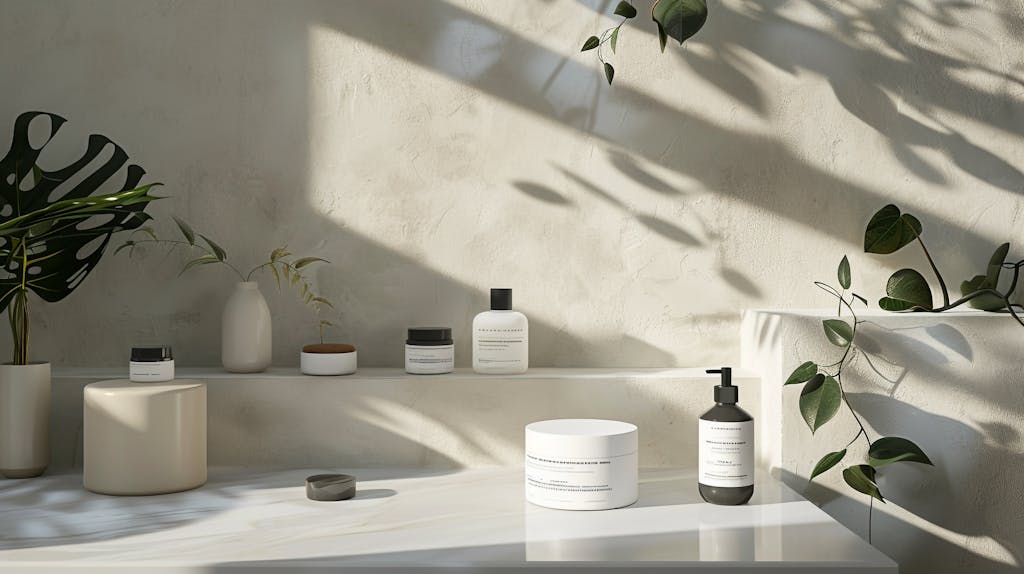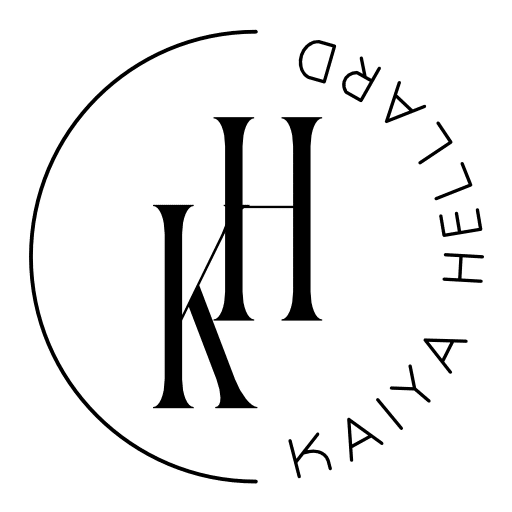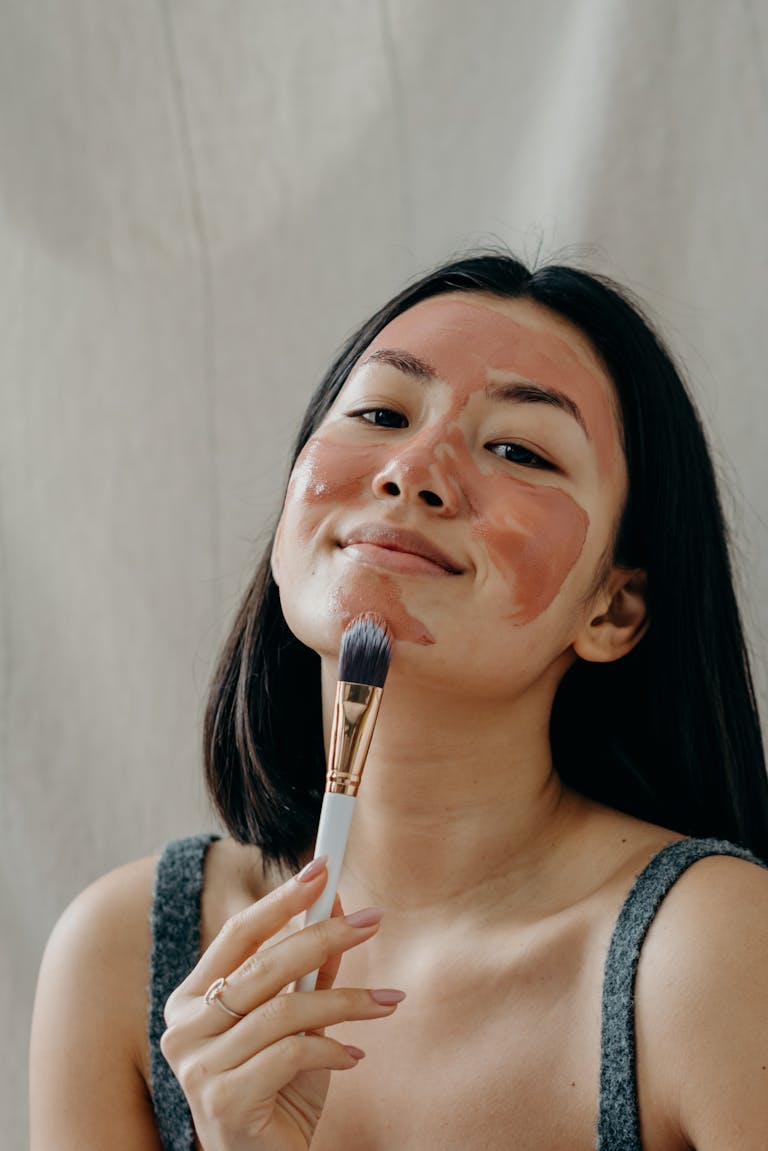
If you’re anything like me, you’ve probably found yourself staring at your bathroom shelves, wondering how on earth you accumulated so many beauty products. If you’ve been paying attention to recent trends, you’ve likely heard about the clean beauty movement and its promises of safer, more natural alternatives to everyday cosmetics and skincare products.
But let’s be honest, the thought of overhauling your entire beauty routine can be daunting, especially when you start looking at the price tags on some of those clean beauty products. I’ve been there, and I know the struggle is real.
A few years ago, I decided to make the switch to clean beauty, but I quickly realised that my budget wasn’t quite as enthusiastic about the idea as I was. Through a lot of trial and error, research, and a fair bit of creativity, I discovered that transitioning to clean beauty on a budget isn’t just possible—it’s entirely doable.
In this guide, I’m going to share the tips and tricks I’ve learned along the way. Whether you’re a student watching every penny, a parent balancing family expenses, or just someone who loves a good bargain (and who doesn’t?), this article is for you. Let’s dive into the world of affordable clean beauty together.
Understanding Clean Beauty
Before we dive into budget-friendly tips, it’s crucial to understand what clean beauty really means. The term ‘clean beauty’ has become quite the buzzword in recent years, but what does it actually entail?
At its core, clean beauty is about safety, transparency, and sustainability. Clean beauty products are typically free from ingredients that have been linked to harmful health effects. This includes a wide range of chemicals such as:
- Parabens: Preservatives that have been linked to hormonal disruption
- Phthalates: Plasticising ingredients that may interfere with hormone function
- Sulfates: Cleansing agents that can be harsh and irritating to skin and eyes
- Synthetic fragrances: Often contain undisclosed chemicals and potential allergens
- Formaldehyde: A preservative that’s a known carcinogen
But clean beauty isn’t just about what’s left out—it’s also about what’s included. Clean beauty products often prioritise natural, organic, and sustainably sourced ingredients. These might include plant-based oils, herbal extracts, and minerals that provide benefits without potential health risks.
It’s important to note that ‘clean’ doesn’t always mean ‘all-natural’. Some safe synthetic ingredients can be included in clean beauty products. The key is that these ingredients have been thoroughly tested and deemed safe for human use.
Another crucial aspect of clean beauty is transparency. Clean beauty brands typically provide full ingredient lists and are open about their sourcing and manufacturing processes. This transparency allows consumers to make informed decisions about the products they use.
Sustainability is also a significant part of the clean beauty ethos. Many clean beauty brands focus on eco-friendly packaging, ethical ingredient sourcing, and cruelty-free practices. This means that when you choose clean beauty, you’re often making a choice that’s better for the planet as well as your health.
However, it’s worth noting that the term ‘clean beauty’ isn’t regulated by any governing body. This means that brands can use the term quite loosely. As a consumer, it’s important to do your research and not just take claims at face value. Look for brands that are transparent about their ingredients and processes, and that have certifications from reputable organisations.

Now that we have a clearer understanding of what clean beauty entails, let’s explore how we can make the transition without breaking the bank.
Transitioning to Clean Beauty on a Budget
1. Start Slowly
Rome wasn’t built in a day, and neither is a clean beauty routine. Begin by replacing one product at a time as they run out. This approach is not only gentler on your skin, allowing it to adjust gradually, but also on your budget. Start with products you use most frequently or those that stay on your skin the longest, like moisturisers or foundations.
2. Research and Educate Yourself
Knowledge is power when it comes to clean beauty on a budget. Invest time in learning to read and understand ingredient labels. Familiarise yourself with common harmful ingredients to avoid, as well as beneficial ones to look for. Websites like EWG’s Skin Deep database can be invaluable resources. The more you know, the better equipped you’ll be to make informed decisions without relying solely on marketing claims or brand names.
3. Prioritise Essential Products
Focus on replacing products that have the most significant impact on your health. These are typically leave-on products that stay on your skin for extended periods, such as moisturisers, serums, and foundations. Rinse-off products like cleansers, while still important, can be lower on your priority list as they have less contact time with your skin.
4. Look for Multi-Purpose Products
Many clean beauty brands offer products that serve multiple functions, which can be a real money-saver. For instance, a tinted moisturiser with SPF can replace your separate foundation, moisturiser, and sunscreen. Similarly, some oils can be used as cleansers, moisturisers, and hair treatments. By investing in these multi-taskers, you’re getting more bang for your buck.
5. DIY Clean Beauty
Your kitchen can be a treasure trove of clean beauty ingredients. Many effective skincare treatments can be made at home using simple, natural ingredients. For example, coconut oil can serve as a makeup remover and moisturiser, while a mixture of honey and sugar makes an excellent lip scrub. Just be sure to research proper ratios and safety precautions before experimenting.

6. Join Loyalty Programmes
Many clean beauty retailers and brands offer loyalty programmes that can help you save money on future purchases. These programmes often provide points for purchases, early access to sales, or birthday gifts. While the savings might seem small at first, they can add up over time, especially for products you buy regularly.
7. Explore Affordable Clean Beauty Brands
The clean beauty market has expanded significantly, and there are now many brands offering quality products at more accessible price points. Brands like E.L.F, Ilia, and Kosas offer clean formulations without the premium price tag. Do some research to find affordable brands that align with your values and needs.
8. Buy in Bulk or Larger Sizes
When you find a product you love and use regularly, consider purchasing larger sizes or buying in bulk. This often works out cheaper per ounce or millilitre. Just be mindful of expiration dates, especially for natural products that may have shorter shelf lives. This strategy works best for products you use daily, like body lotion or shampoo.
9. Shop Sales and Use Vouchers
Being budget-conscious doesn’t mean you can’t enjoy high-quality clean beauty products. Keep an eye out for sales, especially during major holidays or change of seasons. Sign up for newsletters from your favourite clean beauty brands or retailers to get notified about promotions. Many brands offer discounts for first-time buyers or have referral programmes. Don’t forget to check for vouchers before making a purchase – a little effort can lead to significant savings.

10. Use Less Product
Clean beauty products often have more concentrated formulations, meaning you need less product per application. This makes them last longer and more cost-effective. Pay attention to recommended usage amounts – a pea-sized amount is often sufficient for many products. Using the right amount not only saves money but can also be better for your skin, preventing potential irritation from overuse.
11. Embrace Minimalism in Your Routine
Sometimes, less truly is more. Take a critical look at your current routine and consider if you really need every product. You might find that by simplifying your regimen, you not only save money but also give your skin a chance to breathe and balance itself. A basic routine of cleanser, moisturiser, and sunscreen can be sufficient for many people. Add targeted treatments only as needed, rather than using everything at once.
Overcoming Common Challenges in Your Clean Beauty Journey
As you embark on your clean beauty journey, you may encounter some obstacles. Here are some common challenges and how to tackle them:
1. Dealing with Product Performance Differences
Clean beauty products might perform differently from conventional ones. For instance, natural deodorants may need an adjustment period.
Solution: Be patient and give your body time to adapt. If a product truly isn’t working for you, don’t hesitate to try a different clean alternative.
2. Managing Higher Initial Costs
Some clean beauty products might seem more expensive upfront.
Solution: Remember that you often need less product per use, making them last longer. Focus on the cost per use rather than the initial price tag.
3. Navigating Greenwashing
With the rise of clean beauty, some brands may exaggerate their ‘clean’ or ‘natural’ claims.
Solution: Always read ingredient lists and look for third-party certifications. Be wary of vague terms like ‘pure’ or ‘eco-friendly’ without substantiation.
4. Shorter Shelf Life
Clean products often have fewer preservatives, which can mean a shorter shelf life.
Solution: Pay attention to expiration dates and storage instructions. Consider buying smaller sizes of products you use less frequently.

5. Limited Availability
Clean beauty products might not be as readily available as conventional ones in all areas.
Solution: Explore online shopping options. Many clean beauty brands offer free shipping over a certain purchase amount.
6. Allergic Reactions
Natural ingredients can still cause allergic reactions in some people.
Solution: Always patch-test new products. If you have known allergies, be extra vigilant about checking ingredient lists.
7. Consistency and Texture Differences
Clean beauty products might have different textures or consistencies compared to what you’re used to.
Solution: Keep an open mind and give yourself time to adjust. You might find you prefer these new textures once you’re accustomed to them.
Remember, transitioning to clean beauty is a journey, not a destination. It’s okay to take it slow and make mistakes along the way. The key is to stay informed, be patient with yourself, and keep your end goal in mind: a beauty routine that’s good for you and the planet, without breaking the bank.
Conclusion
As I stand in front of my bathroom mirror today, I can’t help but smile at the transformation. My shelves are no longer cluttered with products full of unpronounceable ingredients. Instead, they house a carefully curated collection of clean beauty items that not only make me look good but also align with my values—all without breaking the bank.
Transitioning to clean beauty on a budget has been a journey of discovery, learning, and occasional frustration. But let me tell you, it’s been worth every moment. Not only do I feel better about what I’m putting on my skin, but I’ve also become more mindful of my consumption habits and more appreciative of the simple, natural ingredients that nature provides.
Remember, the goal isn’t perfection—it’s progress. Every small step you take towards cleaner, safer beauty products is a win for your health, the environment, and your purse. Whether you’re replacing one product at a time or diving headfirst into DIY solutions, you’re making a difference.
So, to you, dear reader, I say this: embrace the journey. Be patient with yourself. Celebrate the small victories. And most importantly, have fun exploring the world of clean beauty. Your skin, your health, and your budget will thank you.
Here’s to beautiful, budget-friendly, and clean beauty routines for all of us. Happy clean beauty shopping!







